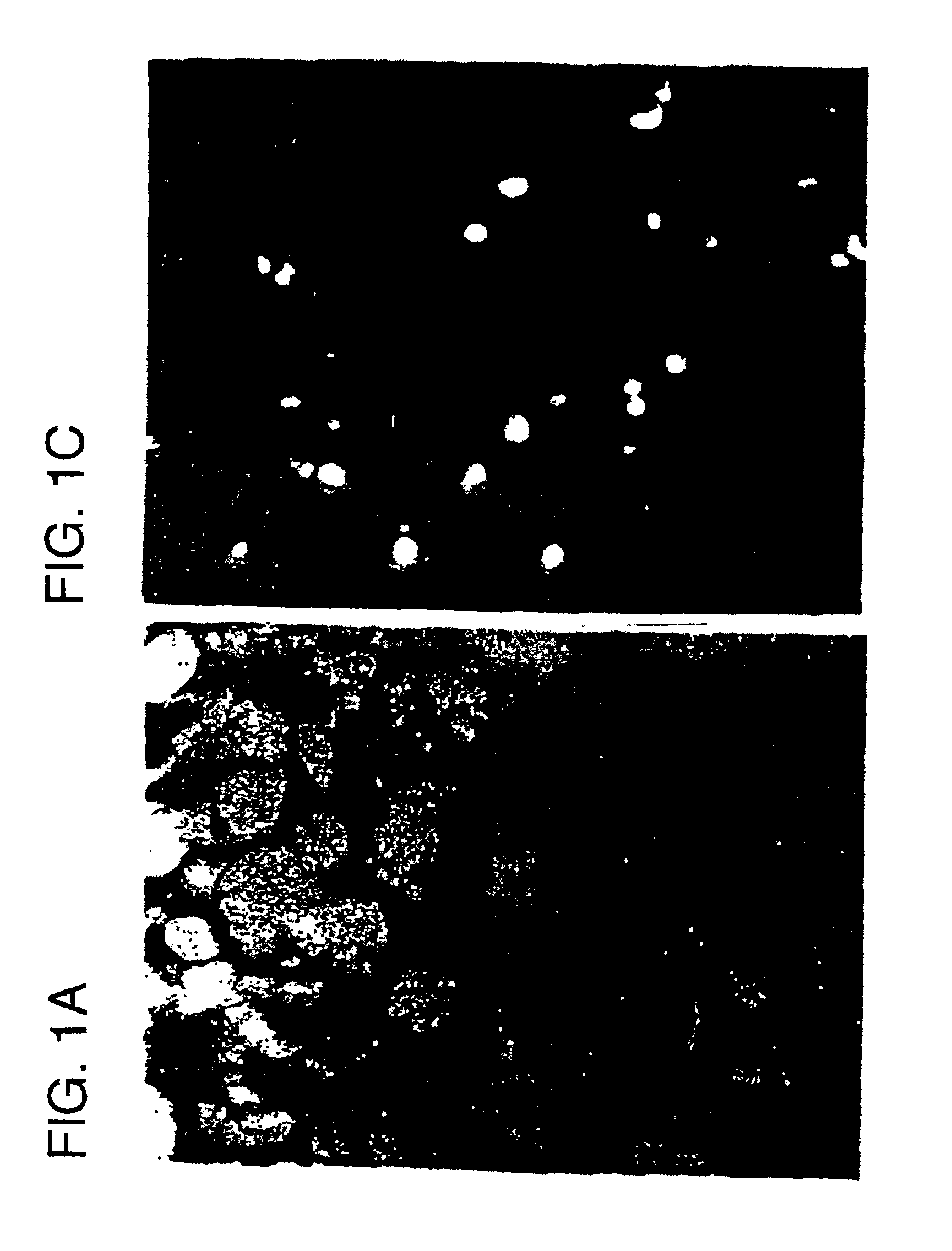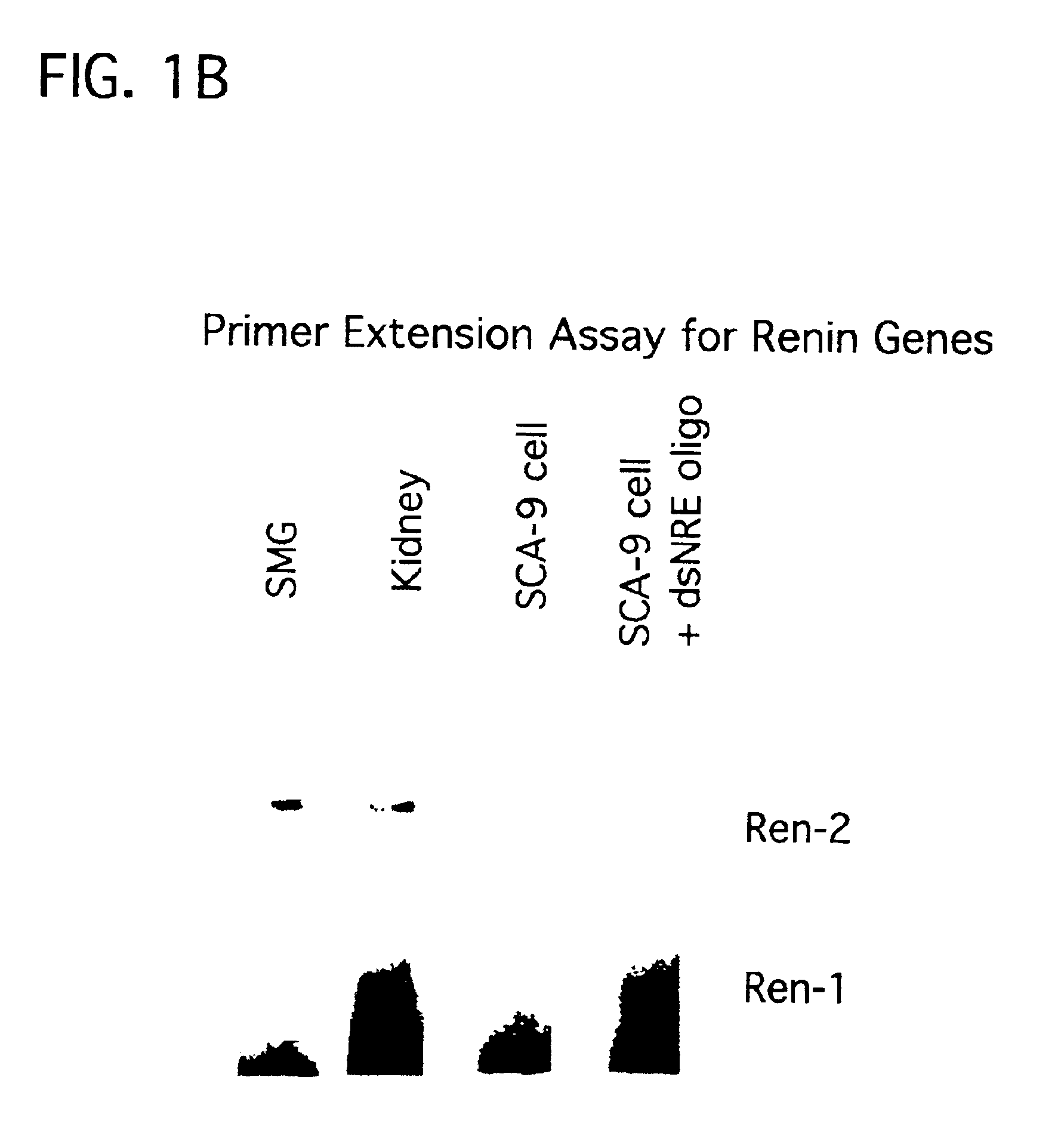Therapeutic use of cis-element decoys in vivo
- Summary
- Abstract
- Description
- Claims
- Application Information
AI Technical Summary
Benefits of technology
Problems solved by technology
Method used
Image
Examples
example 1
Transfection of E2F Decoys into Cultured Cells
For the nuclear extracts, vascular smooth muscle cells ("VSMCs") were stimulated by serum until confluent. After confluent, the cells were made quiescent by placing in serum free medium for 48 h. After the transfection of decoy oligodeoxynucleotides ("ODN"; 14 bp) essentially as described in Morishita et al. (1993) Proc. Natl. Acad. Sci. USA, 90, 8474-8478, cells were stimulated by 5% serum. After 6 h, RNA was extracted by RNAzol (Tel-Test Inc, Texas) Chomczynski and Sacchi (1987) Anal Biochem 162, 156-159. Levels of PCNA, cdc2 and beta-actin mRNAs were measured by RT-PCR (Morishita et al. (1993) supra). The PCNA primer (nucleotides 150-177 of rat PCNA cDNA) and the cdc2 5' primer (nucleotides 54-75 of human cdc2 cDNA) were previously described (Morishita et al. (1993) supra). The primers complementary to the rat beta-actin gene were obtained from Clontech Laboratories Inc. (Palo Alto, Calif.). Aliquots of RNA were amplified simultaneous...
example 2
E2F Decoys In Vivo
Liposomes were prepared as follows: Phosphatidylserine phosphatidylcholine, and cholesterol were mixed in a weight ratio (1:4.8:2) to create a lipid mixture. Lipid was hydrated in a balanced salt solution containing ODN (110 nmol). Purified HVJ(Z) strain was inactivated by UV radiation just before use. The liposome suspension was mixed with HVJ (Z strain) (20,000 hemagglutinating units), incubated, then free HVJ removed by sucrose density gradient centrifugation. The final concentration of encapsulated DNA was calculated as previously reported (Morishita et al. (1993) supra). This method results in a more rapid cellular uptake and nuclear concentration, leading to a 100-fold higher transfection efficiency of ODN than lipofection or passive uptake methods.
The sequences of the phosphorothioate ODN utilized:
We also examined another set of decoy ODNs containing two binding sites:
Rat aortic VSMC (passage 4-10) were studied in a confluent, quiescent state in serum-free m...
example 3
Effect of Decoy ODN on in Vivo Gene Expression
A 2 French Fogarty catheter was used to induce vascular injury in male Sprague-Dawley rats (400-500 g; Charles River Breeding Laboratories) (Hanke et al., Circ. Res. 67, 651-659 (1990)). These rats were anesthetized, and a cannula introduced into the left common carotid via the external carotid artery. After vascular injury of the common carotid, the distal injured segment was transiently isolated by temporary ligatures. The HVJ complex was infused into the segment and incubated for 10 min at room temperature. No adverse neurological or vascular effects were observed in any animal undergoing this procedure.
For RNA analysis, vessels were harvested at 6 h, (c-myc and beta-actin) and one day (cdc2 kinase, PCNA and beta-actin) after transfection. RNA was extracted from mismatched or E2F decoy ODN (3 .mu.M) treated injured or untreated intact vessels by RNAzol (Tel-Test Inc., TX). RT-PCR was performed as described above. For BrdU staining, Br...
PUM
| Property | Measurement | Unit |
|---|---|---|
| total volume | aaaaa | aaaaa |
| binding affinity | aaaaa | aaaaa |
| time | aaaaa | aaaaa |
Abstract
Description
Claims
Application Information
 Login to View More
Login to View More - R&D
- Intellectual Property
- Life Sciences
- Materials
- Tech Scout
- Unparalleled Data Quality
- Higher Quality Content
- 60% Fewer Hallucinations
Browse by: Latest US Patents, China's latest patents, Technical Efficacy Thesaurus, Application Domain, Technology Topic, Popular Technical Reports.
© 2025 PatSnap. All rights reserved.Legal|Privacy policy|Modern Slavery Act Transparency Statement|Sitemap|About US| Contact US: help@patsnap.com



